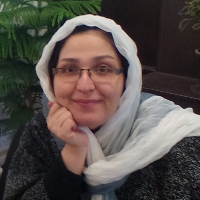Retrieval & Classification of Identity Layers in Lithographed Manuscripts of Qajar Era (Case study: Folklore Manuscripts)
Author(s):
Article Type:
Case Study (دارای رتبه معتبر)
Abstract:
Visual art of the Qajar era was inspired by both the new technical developments such as photography and printing as well as the tradition of Persian painting of the previous schools that had developed new visual features. Along with this visual quality, the exposure of the artists to western traditions and the popularity of modernity caused the Iranian society to experience changes in its artistic identity and thus, new types of visual features emerged. These features depict a series of particular changes which distinguish them from the dominant worldview of the Persian painting in terms of appearance. This type of visual art creates different visual forms in comparison to previous instances of Persian painting by using different designs, new techniques and tools. Illustrated manuscripts of the Qajar era are a collection of unique documents that incorporate the art and culture of this period of time and are the readings of an authentic artistic statement of aesthetic aspects and identity layers. This paper mainly aims at classifying aesthetic features prevailing in the illustrations of the lithographed manuscripts as well as recognition and retrieving of the identity layers and presenting the priority of the identities in these illustrations. Considering the features of Iranian-Islamic art as well as the Western artistic characteristics prevalent through the Qajar era painting, it could be hypothesized that due to exposure to modernism, the visual art styles of the Qajar era are different in lots of visual and technical aspects as compared to the Persian painting tradition; however, due to the presence of some aesthetic features of Iranian-Islamic art, they might be considered the continuation of the same visual tradition. Study of the visual qualities and aesthetic aspects of a selection of Qajar-era individual documents and manuscripts which are considered as original artistic statements in this essay leads to the reading of the identity layers of this era which could be found both in art and culture of this period. In all cultures and countries, the definition of the concept of identity is associated with religion, ideology, political and social relations and history. In artworks, the identity has different layers and each layer has different aspects. Such identity might be examined in a different manner for each work of art which, in its own turn, might have several layers: one of them being stronger and more obvious than the others. Nonetheless, all the hidden layers of identity leave their trace on the outward manifestation of the identity layer in the artworks. Due to the specific social and political ambience of the country, popularity of Archaism (approaches to ancient Iran periods) as well as widespread relations with the west (through business, education, politics and etc.), Qajar reign is considered as one of the important eras of Iranian art; therefore, we can find several identity layers in the artworks of this Era. This paper chiefly intends to categorize the main aesthetic features in the illustrations of the lithographed manuscripts of Qajar era and also recognize and retrieve the identity layers therein. Subsequently, the priority of the identity layers of these illustrations shall be studied. The study makes effort to answer these questions: What are identity layers in the visual art of Qajar Era and which identity layers appeared more frequently than others in Qajar Lithographed Folklore Manuscripts? The research has been conducted using descriptive-analytical method through the desk study of library sources as well as other valid ones such as the manuscripts. The statistical population includes 7 Lithographed Folklore Manuscripts created during the Qajar Era using a selective procedure (11 pictures were selected). The analyzed results indicate that the identity layers of the artworks of this era might be categorized into four: archaic, Persian-Islamic,westernization and Islamic-Shiite. Moreover, in each type of artworks created during the Qajar Era, some layers play a more important or a special role. In this case study (Folklore Manuscripts), the first and the most important layer is westernization to be followed by Persian-Islamic. The other layers (Islamic-Shiite and archaic) are less important and thus, imperceptible.
Keywords:
Language:
Persian
Published:
Journal of Theoretical principles of Visual Arts, Volume:4 Issue: 1, 2019
Pages:
89 to 101
magiran.com/p2021836
دانلود و مطالعه متن این مقاله با یکی از روشهای زیر امکان پذیر است:
اشتراک شخصی
با عضویت و پرداخت آنلاین حق اشتراک یکساله به مبلغ 1,390,000ريال میتوانید 70 عنوان مطلب دانلود کنید!
اشتراک سازمانی
به کتابخانه دانشگاه یا محل کار خود پیشنهاد کنید تا اشتراک سازمانی این پایگاه را برای دسترسی نامحدود همه کاربران به متن مطالب تهیه نمایند!
توجه!
- حق عضویت دریافتی صرف حمایت از نشریات عضو و نگهداری، تکمیل و توسعه مگیران میشود.
- پرداخت حق اشتراک و دانلود مقالات اجازه بازنشر آن در سایر رسانههای چاپی و دیجیتال را به کاربر نمیدهد.
دسترسی سراسری کاربران دانشگاه پیام نور!
اعضای هیئت علمی و دانشجویان دانشگاه پیام نور در سراسر کشور، در صورت ثبت نام با ایمیل دانشگاهی، تا پایان فروردین ماه 1403 به مقالات سایت دسترسی خواهند داشت!
In order to view content subscription is required
Personal subscription
Subscribe magiran.com for 70 € euros via PayPal and download 70 articles during a year.
Organization subscription
Please contact us to subscribe your university or library for unlimited access!



